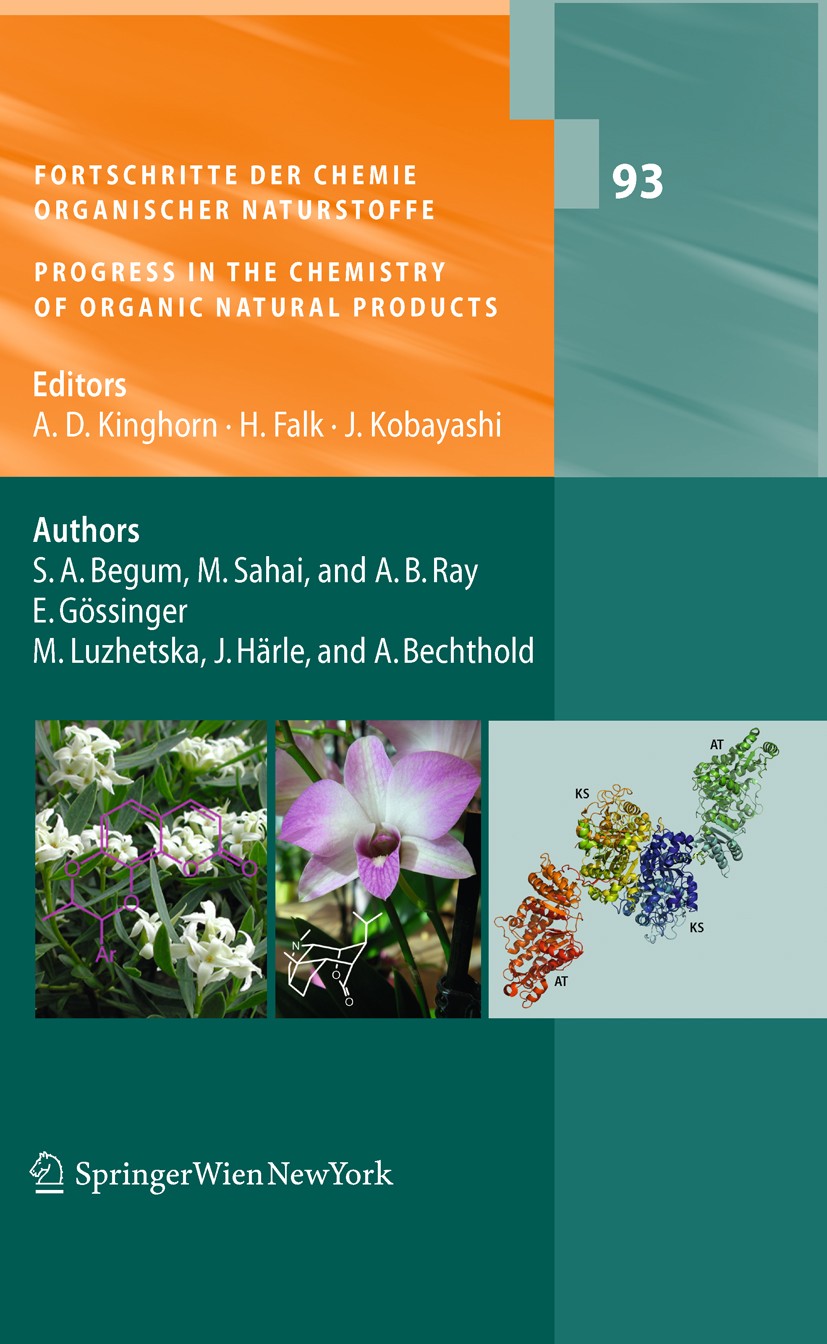| 书目名称 | Fortschritte der Chemie organischer Naturstoffe / Progress in the Chemistry of Organic Natural Produ | | 编辑 | Mahendra Sahai,Edda Gössinger,Anil B. Ray,A. Dougl | | 视频video | http://file.papertrans.cn/347/346514/346514.mp4 | | 概述 | Written by recognized authorities in their fields.Providing a comprehensive and up-to-date review in topic.Includes supplementary material: | | 丛书名称 | Fortschritte der Chemie organischer Naturstoffe‘ Progress in the Chemistry of Organic Natural Produc | | 图书封面 |  | | 描述 | Lignans, by convention, are a group of natural products that are formed by linking two phenylpropanoid units (C C units) by oxidative coupling. Most importantly, in 6 3 a lignan, two (C C units) are bound through the central carbon of their side chains, 6 3 0 i. e. the 8 and 8 positions (1, 2). The occurrence of C C -dimers, linked at sites other 6 3 0 than the 8–8 positions, is also known and these compounds have been termed neolignans (3, 4). As these two groups of compounds have close structural as well as biosynthetic relationships, they are often associated together and incorporated under the general term “lignan” (5). The diverse structural categorization of true lignans and of a few neolignans is presented in Fig. 1. Through the years, several review articles or books covering different facets of lignans, including their ch- istry (6, 7), biogenesis (8), synthesis (9), and biological activities (10) have been published. Enduring research for the investigation of secondary metabolites of plants has evidenced some compounds that are biogenetically related to true lignans or neolignans but bear some features not discerned in conventional lignans. These compounds or groups of co | | 出版日期 | Book 2010 | | 关键词 | biochemistry; chemistry; natural product; polymer; synthesis | | 版次 | 1 | | doi | https://doi.org/10.1007/978-3-7091-0140-7 | | isbn_softcover | 978-3-7091-1107-9 | | isbn_ebook | 978-3-7091-0140-7Series ISSN 0071-7886 | | issn_series | 0071-7886 | | copyright | Springer-Verlag Vienna 2010 |
The information of publication is updating

|
|
 |Archiver|手机版|小黑屋|
派博传思国际
( 京公网安备110108008328)
GMT+8, 2025-11-15 05:19
|Archiver|手机版|小黑屋|
派博传思国际
( 京公网安备110108008328)
GMT+8, 2025-11-15 05:19


